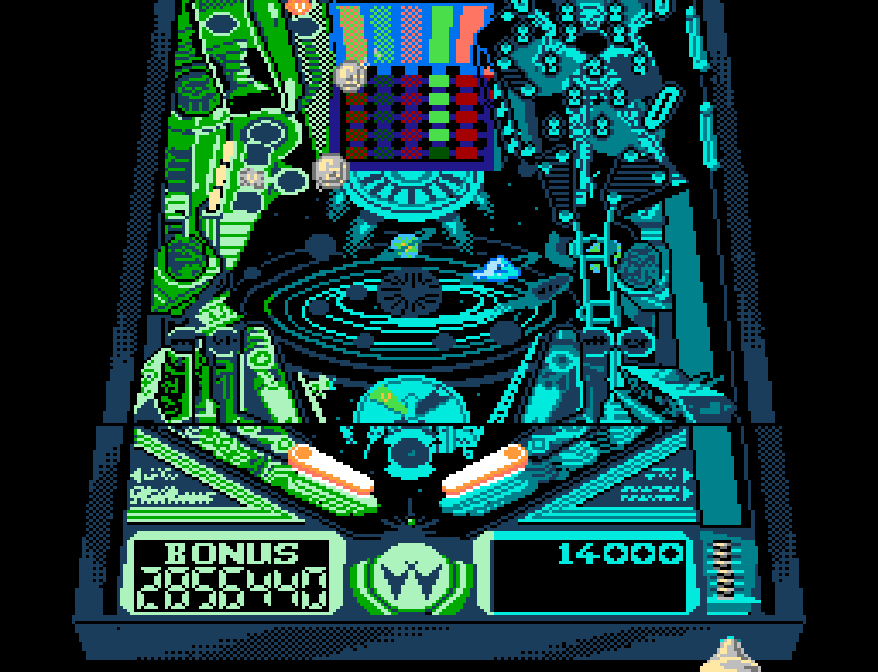PeteView: Pin*Bot (NES)
- Peter Skerritt
- Aug 3
- 3 min read

In the late 1980s and into the early 1990s, there were two pinball machines that often got tokens from me when I had the opportunity to play them: High Speed and Pin*Bot. Coincidentally, both of these got rather interesting ports to the Nintendo Entertainment System from RARE. This meant that I would have to play them.
Pin*Bot was the first of these to be released. Taking place in space, there are nods to the Solar System in play, as well as a talking pinball robot that players will interact with through its "visor"-- protected by a bank of targets that can lift to uncover two capture holes that serve as Pin*Bot's eyes. It's a really cool concept.

The Williams pinball table predates the NES conversion by a couple of years. The conversion is based on-- but not a completely bumper-to-bumper copy of-- the actual table. RARE adds some extra challenges, like a monster that can eat a player's ball and ships that launch missiles that can destroy flippers. Depending on how open you are to these changes, RARE's Pin*Bot can be fun or frustrating... but more on this in a bit.
The game's physics will take some getting used to, especially playing today when compared to Pinball FX or what was once Pinball Arcade. Once players adapt, they'll learn certain ball behaviors and shots to avoid. There are instances where the same result happens every time based on the angle of where a ball is hit. Such predictability is very much a "video game thing". It's also easier to his shots consistently as players learn the physics and timing. Pin*Bot NES is much more skill and very little luck than most pinball machines you have played.

After collecting a Solar Value Jackpot in Multiball, Pin*Bot NES bares its console conversion fangs. The color of the playfield changes and obstacles start presenting threats. On the Green playfield, a blue blob monster appears and begins making its way through the solar system diagram from Pluto towards the Sun. If the player cannot open the Visor, trigger Multiball again, and collect another Solar Value Jackpot before the blob monster reaches the Sun, the monster will sit and wait for your ball to approach it. If the ball speed is not fast enough, the monster will literally eat the ball and spit out the metal shards, which ends that ball in play. It gets stressful to be sure. Collecting a second Solar Value Jackpot will again change the playfield color, and present a new enemy: a missile-firing ship that launches its payload when it's destroyed and leaves players with precious seconds to intercept it with the ball before it impacts a flipper. Two missile strikes on a flipper will destroy it... and playing with one flipper is very difficult to maintain for long.
Purists usually hate this design choice. It's manufactured challenge and isn't true to the table. That said, given how much easier the physics are, it's understandable that RARE wanted to up the ante. I do think these are a bit too punitive and don't provide the player with much defense against them, other than to complete the Visor and Multiball cycles quickly. Basically, these are ideas that needed a bit more fleshing out.

As is customary for RARE in the NES era, Pin*Bot's visuals and sound are pretty spot on. The 8-bit visual reproduction of the table is decent, and missing or muddy detail is understandable. Interestingly, the game only scrolls the top 80% of the table to follow the ball. The bottom 20%, where the flippers and outlanes are, stays locked. This is different than other pinball games, where there are separate screens for each part of the table (as seen in Rollerball for the NES or Alien Crush for the TurboGrafx-16). The music is pretty good, and the sound effects get the job done. In terms of audio, though, the most notable feature is the digitized speech, which is reasonably close to what players hear when playing the actual pinball machine.
Coming back to Pin*Bot NES after many years, I found myself enjoying it as much as I ever have. While it's been great having more realistic simulations of my favorite pinball machines, there's something about being able to convert a popular table like this one for an 8-bit machine. The fact that I scored over 10 million points for the first time in more than three decades really got the memories flooding back. I wasn't even 21 years old then.
Now I'm in my mid 50s, and I'm realizing that writing a review at 10pm is way past my bedtime. But for a little while, anyway, I was that NES-obsessed young man again. It was a fun trip... and I know I'll be coming back to this game again soon.
















Comments